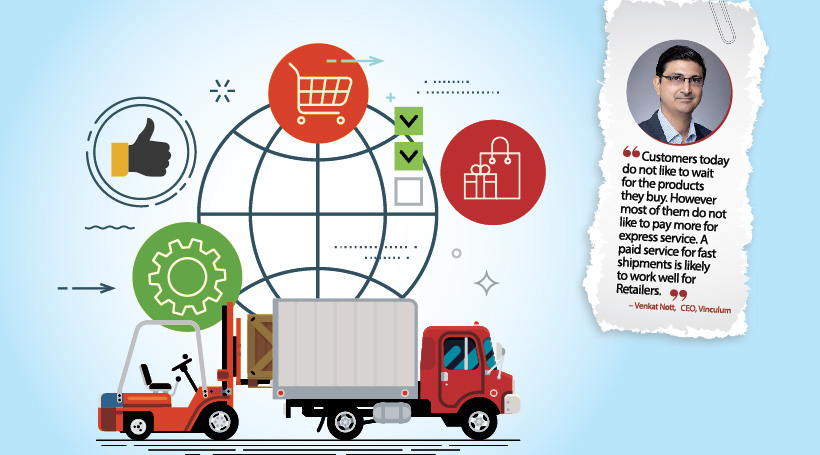
The Role of SCM In Retail Scenario of Today
Source: Images Retail
This article was originally featured on Images Retail Magazine (May 2017 edition, Volume 16)
With the retail market growing vigorously, retailers across the nation are ideating on how to make the best of the opportunities at hand. Supply chain management plays a vital role in the entire process.
Importance of Time Definite SCM Service for Retailers
With an all-round boom in the retail sector, the psyche of the consumers is also rapidly evolving. Consumers today, know what they like, go for what they want, and expect impeccable services. This consumer evolution has stirred the retail sector and to keep up with the pace; retailers are coming up with ways to minimize the operational cost as much as they can, without hampering the quality of the product, time management and keeping up with the demand forecasting.
Providing the right product at the right time is the need of the hour. Management of the transition of products from manufacturing to the point-of-sales is key. Achieving this by itself would ensure the smooth functioning of any retail organization. From the planning of inventory, transition of products and the point of sales, SCM deals with the proper control of it all. A slight shift for the worse to any of the processes in the supply chain could cause dissatisfaction of consumers and lead to major risks in business.
“Availability of stock on shelves is the single largest success factor for a retail business. Timely delivery of products and faster replenishment requires time bound logistic services. Time-definite logistic service is critical for any grocery retail business, particular dairy and F&V sectors, but not so critical for apparel retail business,” Mahesh Khetan, Asst Vice President – Supply Chain Management, Aditya Birla Fashion and Retail Ltd – Pantaloons.
He further adds, “With e-commerce and omnichannel players competing in the marketplace, retailers are indeed getting more and more conscious of time-definite logistic service.” Ranjan Sharma, Head IT and Supply Chain, Bestseller Retail India Pvt Ltd, says, “We have weekly new launches and the entire supply chain is geared to meet those dates as a lot of planning is involved in it and any misses cost us heavily.”
With SCM in place, the retailer is able to monetise on new and upcoming trends with a faster pace and avoid the other risks usually faced.
Revising the Supply Chain Practices in Omnichannel Era
The consumer today is driving the need for transformation in omnichannel retail supply chains. The buyers have all the power in today’s market. They are demanding more options and leveraging retailers against each other to get the best value for their money. A competitive retail environment is leading retailers to opt for an omnichannel strategy. Retailers are working towards seamlessly integrating their distribution channels to improve visibility into inventory and serve their customers in a better way.
The mechanics of logistics is constantly evolving and today as the world is more connected than ever, there is a need for real-time integration across channels. Resonating the same fact, P. C. Sharma, CEO, and Whole Time Director, TCIExpress, says, “ At TCIExpress we are constantly tracking the movement of goods on a real time basis and we also look at online response management (ORM) as a critical mechanism to address the consumer through the social network. We have uniformly deployed content across platforms such as our website, catalogues, brochures, Facebook page, Twitter and LinkedIn, to ensure common messaging.”
The path to purchase is becoming more complex amidst the ever-burgeoning growth of online and mobile shopping. According to Zebra’s 2017 Retail Vision Study (RVS), superior omnichannel support requires 90% inventory accuracy. As a result, inventory accuracy is more critical than ever as products from both brick-and-mortar and digital channels flow through the pipeline. Talking about the same, Deep Agarwal, Regional Sales Director – India, Zebra Technologies, “Omnichannel retailing has become a necessity more than a requirement as consumers today are digitally empowered. Consumers can virtually tap into every retailer’s stockroom from their mobile device to search for products and compare prices. To meet this demand, retailers are adopting technology solutions to heighten merchandise visibility throughout the supply chain, from the time inventory, is shipped from the warehouse and received in a store’s back room to when it’s stocked and replenished on the sales floor.
Agarwal, adds, “The rise of online shopping has trained consumers to demand unprecedented convenience. Retailers today, must be nimble enough to serve their multichannel shopping journeys seamlessly. Around the globe, retailers are investing in IoT technologies to redefine their operations and the shopper experience. Merchants are reinventing their supply chains with upgrades that enable automated, real-time inventory visibility via Internet of Things (IoT), such as RFID, which can boost inventory accuracy levels to as high as 95%.”
Talking from an eCommerce perspective, Venkat Nott, CEO, Vinculum, says, “Customers today do not like to wait for the products they buy. However, most of them do not like to pay more for express service. A paid service for fast shipments is likely to work well for Retailers. Marketplaces have set the standard already and have invested in products not just to streamline their order management processes and to have real time inventory in stores and warehouses but also predictive analytics in terms of what products to carry in which store and keeping the right products in warehouses close to the buyer.”
Further talking about Vinculum services, he says, “Vinculum has cutting edge products to facilitate OmniChannel retailing and provides a real-time view of inventory across the supply chain using our Vin eRetail suite of products.”
Retailer’s Perspective on Omnichannel Retail is going omnichannel and meeting the supply chain
needs of this new environment is a major challenge. Talking on this aspect, Chugh of Raymond says, “ Yes, it’s true that retail is going Omnichannel and meeting the needs of this new environment is a big challenge. Since this is the need of the hour & must be implemented to get the better sales. We are also working on this but at a very initial stage as of now.” Khetan, says, “If you cannot beat them, join them!
Omnichannel is the future and no retail organization can stay away from entering into it. We have started selling online through prominent e-Commerce players like Amazon, Flipkart etc, in addition to creating our own omnichannel platform.”
“We are going through a lot of technology intervention which includes bringing together different portals and marketplaces to converge to one system at the store for execution with real-time integration of inventory and logistics. We have already gone live across all our stores for Tata Cliq since 1st October 2016 and will be live on our brand websites by the end of June,” says, Sharma, from Bestseller.
Forecasting Techniques and Methodologies
Traditionally, retailers have not been able to predict the demand, leading to a mismatch between demand and supply, thereby affecting profitability. Even though forecasting techniques and methodology have continued to develop in sophistication, they cannot deliver the accuracy required for managing logistics in the context of the retail scenario.
The answer to these problems lies not in better forecasts, but in reducing the dependency on the forecast and by harnessing the potential of modern logistics services. Talking about the same, Sharma from Bestseller, says, “We are fast fashion brands and we have to spot trend way ahead of time. Then we get into sampling and manufacturing cycle which is also very long.
Though modern logistic services definitely help to reduce the overall time to make the merchandise available, however, the same cannot replace the art of demand forecasting. At the same time if the entire sourcing strategy and manufacturing is aligned well then smaller sample sets could be developed and on their success, large-scale manufacturing could be done thus reducing the risk.” Chugh, opines, “Answer to these supply chain related problem lies not in better forecasts, but in reducing the dependency on the forecast and by harnessing the potential of modern logistics services.”
Innovations that Inextricably Links SCM & Retail
Talking about the innovations that is happening in the space of supply chain management, Kanaujia, says, “Emerging trends like making the supply chains digital, increasing the role of procurement in supply chain, increasing collaboration for efficient supply chain management, etc., will be the major factors driving growth in the organised retail market in India. Being the industry leader, our role is very vital in bringing about the global standards to India. We are proactively working towards hastening this change in our industry and taking it to a different level.” Future Supply Chain Solutions Limited has recently inaugurated a High-Speed Cross Belt Sortation Technology, at its Distribution Centre Mihan, Nagpur.
This new technology, being first of its kind in India, is touted to be a game changer and a stepping stone, making it India’s most automated first-of-its-kind Talking about this new innovative SCM facility, Kishore Biyani, Group CEO, Future Group says, “This distribution center will be a milestone in the Indian warehousing sector. With the brilliant technology used in the Sorting system at the DC along with the individually coordinated system solutions, we can ensure the highest level of service to the Consumers of the Nation.”
Talking about some of the SCM best practices adoption, Khetan, says, “There had been quite a few best SCM practices adopted by us, key ones being: use of warehouse management system (WMS) coupled with RFID technology turning our warehouses into paperless operation, Auto replenishment system (ARS), ensuring faster replenishment of stock to the stores and Vendor portal for auto approvals of shipment requests from vendor. Divulging the details of SCM innovative practices that has helped Raymond in staying ahead in the game, Chugh, says, “Layout restructuring, current season stock kept on ground floor & previous season stock moved to 1st & 2nd floors based on the aging. This helped us in increasing picking productivity; manpower deployment based on season/month wise load helped us in cost reduction of WH transactions/piece; working on Auto LSP selection program which help us in significant reduction of the logistics cost/piece; manual processes converted to system based programs which helped in hassle and error free work.”
Keeping Business Seamless Even During Peak Seasons
Managing fluctuations in demand during peak and seasonal requirements is a must for every retailer. Talking about the same, Khetan, says, “There is a separate forecast for peak and seasonal requirement which is aligned with capacities at each node of the supply chain, right from transporters’ hubs to warehouse capacities for the transaction as well as storage.”
“We start building up stock at the DC and retail points well in advance so as to reduce the spike in demand. We also cross-train people to handle loads during peak seasons in multiple shifts,” says, Sharma from Bestseller.
A lot of automation devices/equipment are being used in International SCM industry which reduces the dependency on labour. It helps on improving the productivity as well as reduction of manual errors. Talking in the same context, Chugh, says, “We plan the manpower in such a way that during non-peak months/seasons, we reduce the unskilled labour but we don’t touch the skilled labour.
We cover up the additional workloads by doing over time by extending working hours on normal days & working on Sunday, as and when required.”
Read the full article here: http://www.imagesgroup.in/
Vinculum is a SaaS-based software company that enables multi-channel retailing. With ready integrations to front-end platforms, marketplaces, logistics companies, and cross-border platforms globally, they enable businesses through their suite of order management and fulfillment products to sell across 65+ countries and use real-time view of inventory in stores and warehouses to provide omnichannel experience to customers.
- eCommerce
- MultiChannel Retail
- Vinculum
- sell globally
- Supply Chain Optimization
- Future Supply Chain
- supply chain management
Recommended for you
ArrayLatest Posts
 Selling Online On Your Own Store– Dos and Don’ts for Online sellers
Selling Online On Your Own Store– Dos and Don’ts for Online sellers How to Sell Online- And Make it Big!
How to Sell Online- And Make it Big! Metro Gaisano partners with Vinculum to accelerate its growth
Metro Gaisano partners with Vinculum to accelerate its growth The ‘Nykaa’ of eCommerce: How we helped them grow
The ‘Nykaa’ of eCommerce: How we helped them grow Webinar – Best Practices for Growing Your eCommerce Business
Webinar – Best Practices for Growing Your eCommerce Business O2O Series: A retailer’s Imperative part III
O2O Series: A retailer’s Imperative part III How to find products to Sell Online
How to find products to Sell Online 3 steps to start selling online NOW
3 steps to start selling online NOW
Categories
- O2O (15)
- Inventory Management (10)
- Order Management (11)
- Warehouse Management (12)
- Distributed Order Management (2)
- Selling Online (15)
- Product Information Management (7)
- eTailers (13)
- Events (17)
- Success Stories (25)
- Master Data Management (4)
- Cross-border eCommerce (1)
- Webinars (4)
Archives
- June 2017 (2)
- May 2017 (8)
- April 2017 (2)
- March 2017 (5)
- February 2017 (4)
- January 2017 (2)
- December 2016 (3)
- November 2016 (3)
- October 2016 (6)
- September 2016 (11)
- August 2016 (6)
- July 2016 (3)
- June 2016 (12)
- May 2016 (6)
- April 2016 (3)
- March 2016 (7)
- February 2016 (11)
- January 2016 (3)
Latest News
-
fashion-retail-picks...MUMBAI: Sales at the apparel and fashion divisions of four o...
-
Amazon shares hit US...Amazon.com’s shares rose briefly just above US$1000 (N...
-
Wal-Mart’s e-c...Wal-Mart Stores Inc. on Thursday reported that first quarter...
-
JD rumored to invest...China’s JD is reportedly currently negotiating with PT Tok...
-
Souq sale is a game ...Amazon, the world’s largest online retailer by sales and m...
-
Lazada moves warehou...The two will partner to meet rising e-commerce demand in the...
-
Wal-Mart Rushing to ...Wal-Mart Stores, the 800-pound gorilla of retail, is running...
-
Nordstrom’s e-comm...Nordstrom fared better than its fellow fashion retailers in ...
-
Decks cleared for Sn...The term sheet with Flipkart could be signed within this wee...
-
How an Online Grocer...One of the more popular business mantras to hit town recentl...
-
Survey: Mobile payme...About 65% of 300 retail IT managers and c-level professional...
-
PayPal, Google team ...PayPal and Google deepened their relationship with a new agr...
-
In Asia Pacific, Ind...Online shoppers in India continue to feel most secure when c...
-
Amazon, Grofers, Big...The government has received investment proposals from three ...
-
Dubai grows into a h...To grow an online marketplace from the grass roots into one ...
-
Apple shares latest ...We’ve known for a while now that Apple is planning a new f...
-
Amazon to buy Middle...Amazon.com Inc has agreed in principle to buy 100 percent of...
-
Amazon to expand cou...The move reflects Amazon's efforts to court increasingly imp...
-
Walmart Expands Its ...SAN FRANCISCO — The purchase of Jet, an upstart e-commerce...
-
WalMart opens JD.com...Wal-Mart has opened a store on JD.com’s online shopping pl...
-
Flipkart may set up ...eCommerce marketplace Flipkart is planning to open brick-and...
-
Alibaba CEO eyes $4 ...The eCommerce company is building a network that would allow...


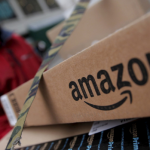







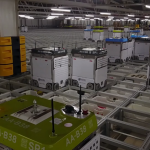


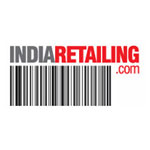


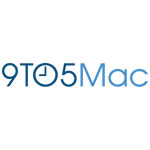







Leave a Reply
Be the First to Comment!